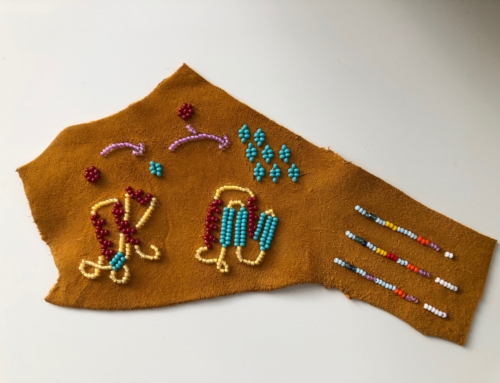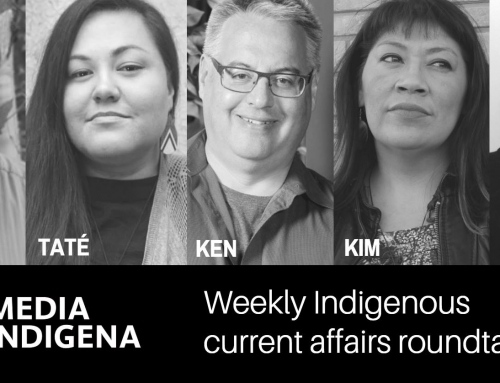
Sámi flags flying over Uppsala University!
I am thrilled to be blogging from the 3rd Supradisciplinary Feminist Technoscience Symposium organized by my colleague May-Britt Öhman at Uppsala University, Sweden. The five-day symposium (Oct 14-18) is hosted by the Centre for Gender Research within Dr. Öhman’s research project, Rivers, resistance and resilience: Sustainable futures in Sápmi and in other Indigenous Peoples’ Territories. This is my second year coming to Uppsala. I was also a speaker at the 2nd Supradisciplinary Feminist Technoscience Symposium held in October 2012. This year’s program brings together activists, cultural workers, and scholars from across Sápmi and the Scandinavian countries, as well as Japan, India, Canada, Morocco, Peru, Russia and the U.S.
We have had intense conversations following presentations on mining in Sápmi and a film on anti-mining blockades and protests by Sámi and other activists against a cannibalizing form of extraction that undercuts the very basis of life. As I write this I read news posted to Facebook by indigenous friends in Canada about the Royal Canadian Mounted Police (RCMP) assaulting peaceful Mi’kmaq led anti-fracking protests today in new Brunswick. In Uppsala this week, we have also heard presentations and responses on dam safety and dam disruption of Sámi lifeways; on traditional Sámi foodways; on indigenous language and cultural revitalization in Scandinavia and Russia; and on the role of urban indigenous people and institution building in the development of living indigenous cultures, and for opposing the colonial state. And we’ve heard about the role of women’s activism in India for advocating for tribal rights and welfare, and indigenous epistemologies as incisive critique of western imperialism that perpetuates extreme global disparity and environmental destruction.

From anti-mining film on Kamp Kallak Gállok in Sápmi
We are sharing our differences in indigenous experience that have to do not only with differences in indigenous cultures, but also in national contexts and colonialisms. And we are sharing lessons learned in challenging colonialism, including ongoing colonial relations inside the academy. Once we not only survive, but begin to do anti-colonial work in more privileged positions within the university or in government, what are the common challenges we encounter inside these institutions and within fields that continue to be integral to colonial projects (e.g. engineering, genomics, anthropology, development studies, natural resource management)? How do we work in different indigenous and national contexts to address these challenges?
This is why I am here, and why I have become so interested in networking with indigenous peoples internationally. Although I inhabit an anthropology department in the United States, I am interested not for anthropological reasons. I am an ethnocentric Dakota after all. Anthropologically, I am most interested in the culture of my own people. I was raised in Dakota communities, both rural and urban, and thus I was a Dakota long before I was an “indigenous” person. But over the last dozen years I have grown through networking and travel into someone who also identifies as indigenous. And I have become committed to my relations with indigenous thinkers from around the world for reasons that have everything to do with being a Dakota. Because I am committed to Dakota sovereignty and thriving, and because I understand the power of being connected to a people who are tied to particular landscapes and waterscapes, which have been simultaneously assaulted by a colonial state, I have become deeply interested in and committed to aiding well-being and anti-colonial possibilities for indigenous peoples around the globe. I understand how important it is to Dakota flourishing to resist the colonial state through cultural and political work and I see that indigenous peoples in different parts of the world have made uneven progress in cultural thriving and political resistance. Thus I approach my work with other indigenous people from a Dakota and more broadly an indigenous standpoint.

Sámi filmmaker/photographer Tor Lundberg Tuorda & Kim TallBear
We are aided in our people-specific struggles against colonial states by sharing lessons between us and by supporting one another in such work. Key to doing this is to understand not only the similarities between us, but also the differences in our respective cultural and nation-state contexts. I am active with the Native American and Indigenous Studies Association (NAISA), an organization that has helped me network with indigenous intellectuals chiefly in the English-speaking world – in Australia, Canada, New Zealand, the Pacific, and the United States. NAISA is also working hard to increase its networks in Latin America. Along with my participation in NAISA, my conversations with old and new friends encountered in Uppsala, from Sweden and from around the world, remind me of the power of the category “indigenous.”
Anthropologist Mary Louise Pratt notes in the volume Indigenous Experience Today (de la Cadena and Starn, 2007) that indigeneity is a generative and productive category. It not only contributes to the rise in numbers of indigenous people worldwide, but it enables mutual recognition and collaboration by peoples across disparate geographies. It facilitates survival and acknowledges the historical rupture of colonialism. It enables us to share lessons learned for how to combat the colonial states and institutions that would erase us, and in the process destroy the very basis for human life – those nonhumans with whom indigenous peoples recognize our co-constitutive relations. In other words, we understand our peoplehoods as emerging in concert with particular landscapes or waterscapes. We exist as peoples in relation with those places and indigeneity helps us defend those relations and to combat colonial states predicated upon our ancestors’ and our continuing dispossession from those places. This is the nature of genocide against indigenous peoples by the way, the simultaneous destruction of co-constituted peoples and their nonhuman relations. Those who insist on defining genocide only according to something akin to the European Holocaust cannot see this.

Shaila Desouza, Goa University, Annika Idenfors, Uppsala U.
Part of doing mutually supportive work between indigenous peoples is to build indigenous studies within different national contexts. A chief lesson I have learned in working outside of the Anglophone countries is that not everyone had the kinds of oppositional social movements that we had in the 1960s and 1970s, for example, the American Indian Movement (AIM). Social movements forced a space in the academy for indigenous voices. While we in the U.S. still see the space for Native American and Indigenous Studies within the mainstream academy as marginal, there is, for example, even less space in the Swedish academy at present for Sámi voices and decolonizing work. Indigenous peoples worldwide might benefit from the theorization of indigeneity and anti-colonial thought by indigenous scholars in places where there has been more opportunity to do that. That is part of what we are doing in Uppsala – making more space in the Swedish academy for these conversations. In turn, I am reminded by my encounters here with indigenous studies scholars from Asia, Latin America, and Europe that indigenous peoples face different challenges at different times and in relation to different state contexts. Thus we organize our cultural-political work differently sometimes. We should support each other in whatever partial ways we can, and as always, learn from one another. We indigenous thinkers from different parts of the world are one another’s students and teachers simultaneously. We can and should offer each other both theoretical and technical assistance in the form of sharing analytical and social protest frameworks for opposing colonial states. And it is productive to work both within and outside of the academy. In the indigenous networks that I inhabit, the boundary between the academy and the “real world” is fluid, and indigenous thinkers, whether they have PhDs or not, help lead the charge in dismantling that boundary. We continue to do so this week in Uppsala.

Anti-mining protesters in Sápmi. From the film on the Gállok Struggle. We heard from two of them this week in Uppsala (Mose and Malin Norrby). See http://kolonierna.wordpress.com/



